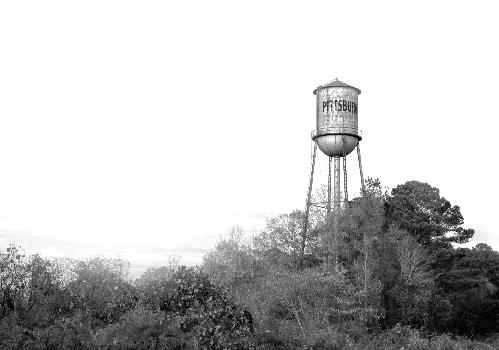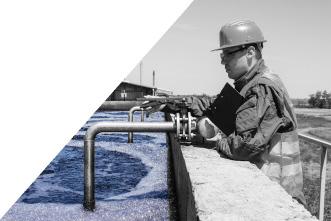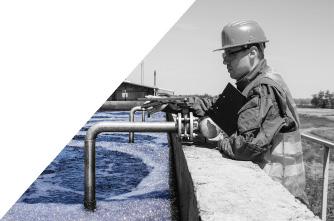
6 minute read
Energy Efficiency Assessment
In this trying economy with rising costs from all directions, our energy consumption is one thing we might have control over. Being more efficient in how we use everything from lighting to heating to pump controls, can generate savings.
Advertisement
So, the first questions are, “Where do we start and what does it cost?” You can start by contacting me, Loyd Rawlings, MRWA Energy Efficiency Circuit Rider, at lrawlings@moruralwater.org or by calling me at 417-214-1018.
For the second question, the cost of the assessment is free if you are eligible. The 2 conditions for eligibility are: your system’s population served be less than 10,000, and your system must be USDA-eligible.
Prior to the assessment, here’s a list of things to gather to ready yourself for the assessment: • Copy of at least 12 consecutive months of electrical billing for each location. (If you have electrical service at a well house, a pump station, an office and a storage tower, you will want to be able to show how much electric each location is consuming.)
• Cost associated with the $/KWh (kilowatt hour). This will allow for charting of the KW hours used and associated costs. It also can help to find anomalies with the billing, which could be included taxes (most systems are taxexempt), special roundup programs, or other abnormal costs.
• On the drinking water side; the amount of water pumped and the amount of water sold. This will help to better understand what the cost/1000 gallons of water pumped is in electrical use. It can be surprising when you see the cost of wasted electricity used and the possibility of lost revenue due to water leaks or slow meters.
Some suggestions from the past for systems to help themselves become more energy efficient are listed from larger cost to smaller cost alternatives: • Addition of Variable Frequency Drives (VFD) to help facilitate a slower startup of motors or to control the motor speeds allowing for more efficient energy consumption.
• Inflow and Infiltration (I&I) fixing I&I issues can help lower energy costs by having less rainwater entering the facility during rain/weather events.
• Lighting: Replacement of standard metal halide or mercury vapor lights with light-emitting diode (LED) lights. These can also provide more lumens for less cost due to running at lower wattage.
• Insulation: Especially concrete or block buildings. These structures have great heat loss through walls due to their low thermal characteristics.
(continued on page 16)
(continued from page 15) • Plug in thermostats for unoccupied rooms, such as, well houses, storage rooms, and rooms requiring regulated temperature (cool in summer, heat in winter).
• Occupancy lighting fixtures: These fixtures are a great help especially if lights are left on with no one there.
The list above is just a very limited list of some of the items that the energy assessment will address. The next step in your journey for an energy assessment will be to conduct a tour of the facilities for the circuit rider. This will allow both the operator and assessor to ask each other questions pertaining to the equipment and what normal flows or conditions are.
The assessment will analyze the energy use for a 12-month period, chart the billing data, such as late fees, demand fees, kilowatt hours used and any taxes that might have been charged. Once completed an assessment will be provided for the system.
An assessment will contain an executive summary of findings and suggested projects. These are suggestions and the system has no obligation to follow them. Basically, it outlines the projects with estimated costs and estimated payback time frame for project. If rebates from your energy provider are available, they too will be listed. This assessment will be available for the system to keep. Also listed are some funding options available for these projects either through United States Department of Agriculture Rural Development (USDA-RD) loans or National Rural Water Association, Rural Water Loan Fund (https://nrwa.org/members/products-services-portfolio/rural-water-loan-fund/).
If your system decides to follow the recommendations, please contact the Energy Efficiency Circuit Rider so that they can come back out and do a follow-up with your system. This allows them, and you to see cost savings for your energy efficiency projects.
Scott Smith
Mobile: (816) 518-7541 Office: (816) 331-3383 Email: ssmith@seilerinst.com www.seilergeo.com
Code Updates
In-Service Cleaning
If you are interested in having us as your partner, feel free to contact one of our department representatives below
NEW TANKS — Rick DiZinno (270) 826-9000 ext. 2601 EXISTING TANKS — Jordan Pyles (270) 826-9000 ext. 4601


The NRWA Rural Water Loan Fund (RWLF) is a funding program specifically de-The NRWA Rural Water Loan Fund (RWLF) is a funding program specifically designed to meet the unique needs of small water and wastewater utilities. The signed to meet the unique needs of small water and wastewater utilities. The RWLF provides low-cost loans for short-term repair costs, small capital projects, or RWLF provides low-cost loans for short-term repair costs, small capital projects, or pre-development costs associated with larger projects. The RWLF was established pre-development costs associated with larger projects. The RWLF was established through a grant from the USDA/RUS, and repaid funds used to replenish the fund through a grant from the USDA/RUS, and repaid funds used to replenish the fund and make new loans. and make new loans.
Reasons to apply Reasons to apply Eligible Projects Include Eligible Projects Include
• Reasonable interest rates • Pre-development (planning) costs for infrastructure projects • NRWA does not charge administrative • Replacement equipment, system upgrades, maintenance or processing fees and small capital projects • Straightforward application process • Energy efficiency projects to lower costs and improve • Quick turnaround sustainability • Disaster recovery or other emergency loans available
Contact your State Rural Water Association or National Rural Water Association for help with the application process.
• Pre-development (planning) costs for infrastructure projects • Replacement equipment, system upgrades, maintenance and small capital projects • Energy efficiency projects to lower costs and improve sustainability • Disaster recovery or other emergency loans availableThe NRWA Rural Water Loan Fund (RWLF) is a funding program specifically designed to meet the unique needs of small water and wastewater utilities. The Contact your State Rural Water Association or RWLF provides low-cost loans for short-term repair costs, small capital projects, or National Rural Water Association for pre-development costs associated with larger projects. The RWLF was established help with the application process. through a grant from the USDA/RUS, and repaid funds used to replenish the fund and make new loans.
Reasons to apply Eligible Projects Include

For More Information: For More Information:

• Pre-development (planning) costs for infrastructure projects • Replacement equipment, system upgrades, maintenance and small capital projects • Energy efficiency projects to lower costs and improve sustainability • Disaster recovery or other emergency loans available Applications, information and forms can be downloaded from the NRWA Applications, information and forms can be downloaded from the NRWA Contact your State Rural Water Association or website, www.NRWA.org/loans. website, www.NRWA.org/loans. National Rural Water Association for
Email applications to: Email applications to: Or mail to: Or mail to: help with the application process.
nrwarwlf@nrwa.org nrwarwlf@nrwa.org
Rural Water Loan Funds Rural Water Loan Funds 2915 South 13th 2915 South 13th Duncan, OK 73533 Duncan, OK 73533










